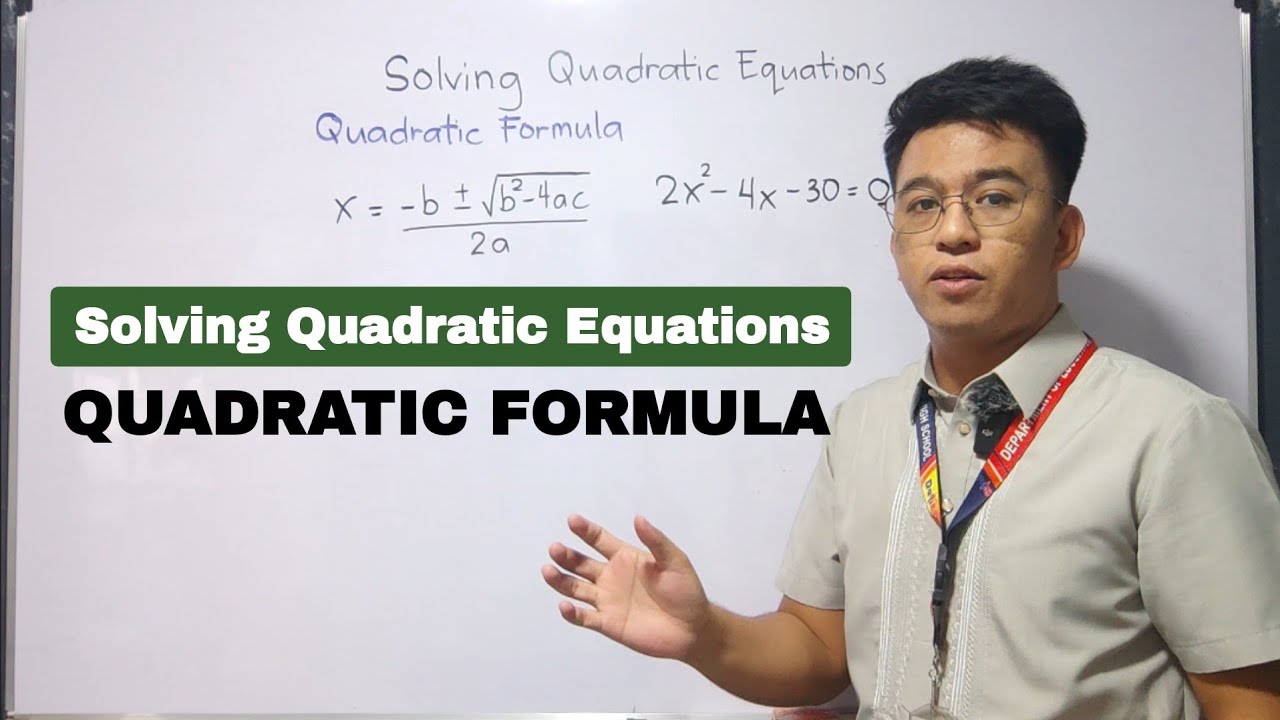Taylor Series Method To Solve First Order Differential Equations (Numerical Solution)
Summary
TLDRIn this educational video, the host, Suy, introduces viewers to solving differential equations using the Taylor series method. The script explains the process step by step, starting with basic differentiation and progressing to higher orders. Suy demonstrates how to calculate the numerical solution for a given first-order differential equation with initial conditions, using the Taylor series formula. The video also mentions alternative methods like Euler's method and Milne's predictor-corrector method, with links provided in the description. The host encourages viewers to subscribe for more informative content.
Takeaways
- 📚 The video is an educational tutorial by Suy on solving differential equations using the Taylor series method.
- 🔢 The script introduces three methods for solving differential equations: Euler's method, Milne's predictor-corrector method, and Adams-Bashforth predictor-corrector method, with links to related videos provided in the description.
- 📈 The primary focus is on the Taylor series method, which is explained in a simple language suitable for understanding the numerical solution of differential equations.
- 📘 The given differential equation to solve is y' = 1 + xy with the initial condition y(0) = 1.
- 📝 The script explains the notation y' as the first derivative of y with respect to x, and the initial conditions as x_0 and y_0.
- 🔍 The process involves differentiating the given differential equation repeatedly to obtain higher-order derivatives.
- 📌 The increment in x is denoted by h, and in this case, h = 0.1.
- 🔢 The script demonstrates the calculation of y_0, y_1, and y_2 using the Taylor series formula, which includes terms up to the third derivative.
- 📈 The Taylor series formula used is y_n = y_0 + h/factorial(1) · y'_0 + h^2/factorial(2) · y''_0 + h^3/factorial(3) · y'''_0.
- 📊 The video provides step-by-step calculations to find the numerical solutions for y at x = 0.1 and x = 2.
- 👍 The presenter encourages viewers to like, share, and subscribe to the YouTube channel for more educational content.
Q & A
What is the main topic of the video?
-The main topic of the video is how to find the numerical solution of differential equations using the Taylor series method.
What are the alternative methods mentioned for solving differential equations?
-The alternative methods mentioned are the Euler's method, Milne's predictor-corrector method, and Adams-Bashforth predictor-corrector method.
Where can viewers find more information about the alternative methods?
-Viewers can find more information about the alternative methods in the video description where links to separate videos on each method are provided.
What does 'y' with an apostrophe (') represent in the context of the video?
-In the context of the video, 'y' with an apostrophe (') represents the first derivative of y with respect to x, which is dy/dx.
What is the given differential equation in the video?
-The given differential equation in the video is dy/dx = 1 + xy, with the initial condition y(0) = 1.
What is the purpose of the increment 'h' in the Taylor series method?
-The increment 'h' in the Taylor series method is the step size used to approximate the solution at a new point in the x-direction.
How is the first derivative 'y0' calculated in the video?
-The first derivative 'y0' is calculated using the formula 1 + x0 * y0, where x0 and y0 are the initial conditions.
What is the formula used to calculate the second derivative 'y''?
-The second derivative 'y'' is calculated using the formula y + x * y', where y' is the first derivative.
How is the Taylor series formula structured in the video?
-The Taylor series formula in the video is structured as y1 = y0 + h/factorial(1) * y'0 + h^2/factorial(2) * y''0 + h^3/factorial(3) * y'''0, where the number of terms corresponds to the order of the derivative.
What are the final numerical solutions for y(0.1) and y(2) obtained in the video?
-The final numerical solutions obtained in the video are y(0.1) = 1.15 and y(2) = 1.222.
How can viewers stay updated with the channel's new content?
-Viewers can stay updated with the channel's new content by subscribing to the YouTube channel and turning on notifications.
Outlines

This section is available to paid users only. Please upgrade to access this part.
Upgrade NowMindmap

This section is available to paid users only. Please upgrade to access this part.
Upgrade NowKeywords

This section is available to paid users only. Please upgrade to access this part.
Upgrade NowHighlights

This section is available to paid users only. Please upgrade to access this part.
Upgrade NowTranscripts

This section is available to paid users only. Please upgrade to access this part.
Upgrade NowBrowse More Related Video

Solving Differential Equations with Power Series: A Simple Example

Introducing Weird Differential Equations: Delay, Fractional, Integro, Stochastic!

FOURIER SERIES LECTURE 1 | STUDY OF DEFINITION AND ALL BASIC POINTS @TIKLESACADEMY

Solving Quadratic Equations using Quadratic Formula

Separation of Variables // Differential Equations

Overview of Differential Equations
5.0 / 5 (0 votes)